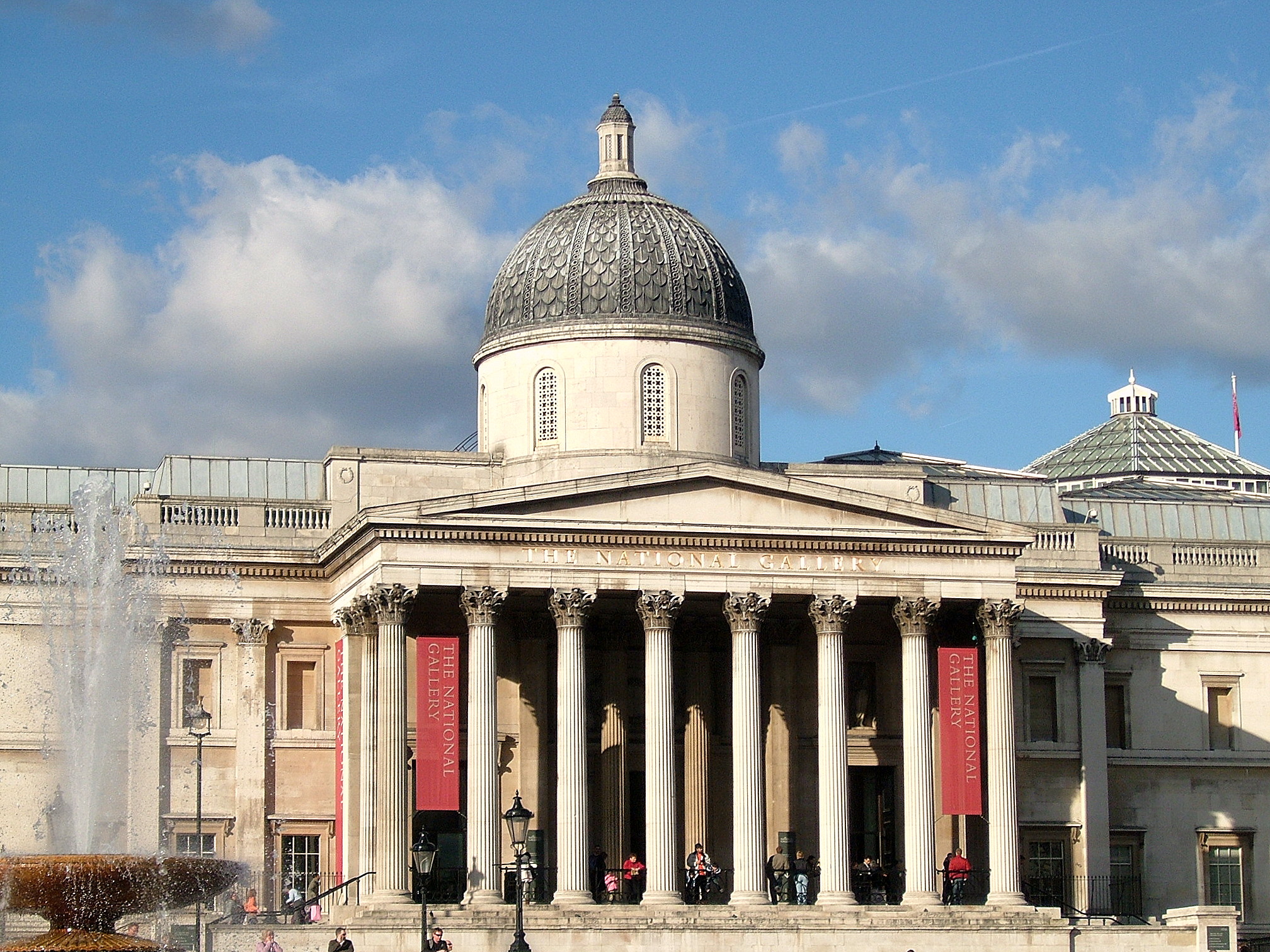The National Gallery – Londra
A differenza di altre grandi collezioni nazionali europee come ad esempio il Musée du Louvre, la National Gallery di Londra non nacque a seguito della nazionalizzazione delle grandi collezioni reali: fu fondata infatti nel 1824 con l’acquisto da parte del governo britannico di 38 quadri appartenenti al banchiere John Julius Angerstein.
Le opere furono inizialmente esposte a casa Angerstein a Pall Mall, ma dato il consistente aumento del volume di opere negli anni, si rese necessario creare uno spazio adatto per conservare la collezione.
Nel 1838 fu quindi inaugurata la sede attuale a Trafalgar Square: progettata dall’architetto William Wilkins, fu scelta una forma neoclassica su modello dell’architettura templare greca, intendendo il museo come “Tempio delle Arti, che alimentasse l’arte contemporanea attraverso i modelli della storia”. La struttura oggi differisce lievemente dall’originale, a causa dei vari lavori di ampliamento effettuati nel corso degli anni, necessari per contenere le raccolte in continua crescita.
Nel tempo infatti la collezione della National Gallery si è configurata come una delle raccolte artistiche più grandi d’Europa: contando più di duemila opere esposte, riesce nell’incredibile impresa di possedere almeno un’opera di qualsiasi grande maestro europeo (oltre a maestranze “minori” e scuole locali), coprendo un arco temporale che va dal medioevo al post-impressionismo ed offrendo una panoramica completa delle scuole italiana, fiamminga, olandese, spagnola, francese e, naturalmente, inglese.











